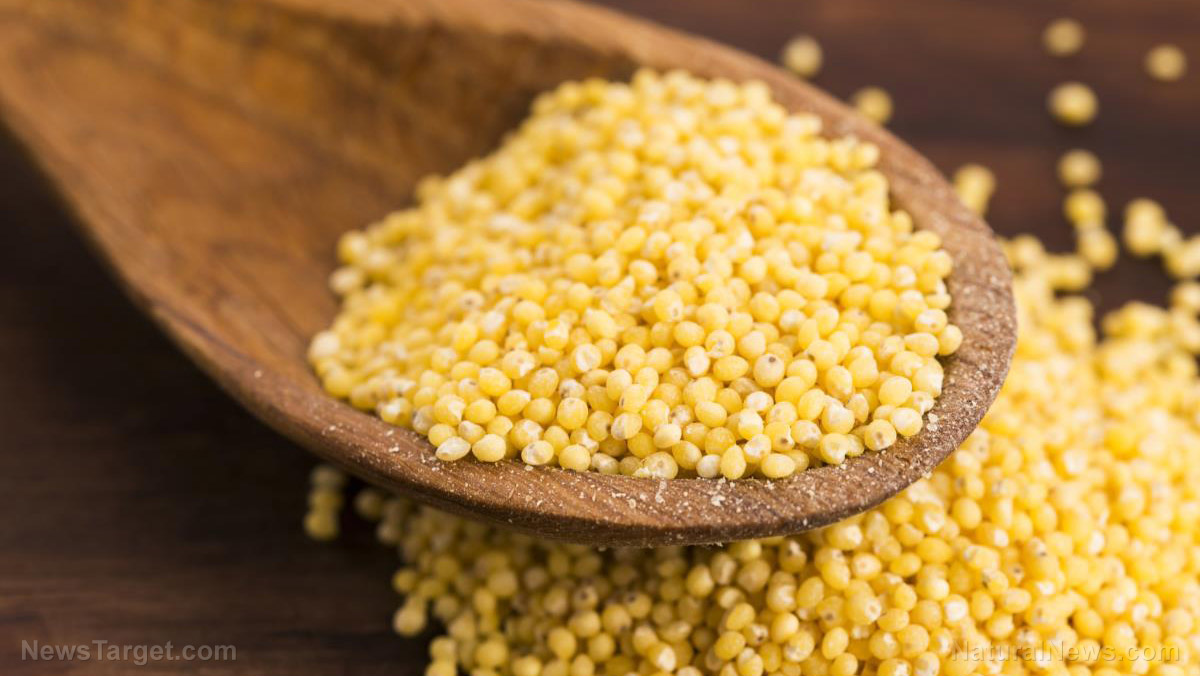
Advertisement
Millet is a gluten-free, fiber-rich cereal grain that offers several health benefits. According to the United Nations (UN), 2023 may even be known as the “International year of millet.”
The Millet Finder
The UN Food and Agriculture Organization (FAO) echoes the organization’s sentiments.
If the UN’s prediction comes true, the International Crops Research Institute of the Semi-Arid Tropics (ICRISAT) and the Indian Institute of Millets Research (IIMR) believe that it will be the “tipping point for millets to reach the masses and become part of everyday diets across the world.”
To encourage regular consumption of the cereal grain, the ICRISAT and the IIMR launched the Millet Finder, a unique database of more than 500 millet products that can be bought in over 30 countries. They hope that by making the information in the database accessible through an app, users can easily find the nearest restaurants offering millet-based dishes or shops selling the cereal grain.
The Millet Finder app can also help users compare products and check out ingredients. The app is easy to navigate, with a map that pinpoints the locations of stores.
Millet-based products are also listed on the app by country, by crop and by type. As of writing, Millet Finder lists:
- 507 products
- 73 companies
- 34 countries
- 10 product categories
The Millet Finder app also teaches users about the versatility of millets as an ingredient, noting that the grain can:
- Be cooked like rice.
- Be used to make non-dairy probiotic beverages.
- Be used to make gluten-free bakery products like cakes, cookies, or muffins.
- Be used to make pasta.
- Be popped as a snack or used to make flakes in muesli.
- Be turned into porridge, soup, or savory dishes.
- Be used to make hot drinks and smoothies.
- Be used to make a side dish or added to salads.
Often touted as the “next quinoa,” health experts think that millets can even outdo the former since the cereal grain is a more versatile ingredient with greater taste and environmental benefits.
Millets and sorghum are often categorized as “Smart Foods” because they are nutrient-rich and environmentally sustainable. At the same time, grains like millets are resilient to climate change and have immense potential for further development.
Improving consumer awareness
The ICRISAT and the IIMR admit that there’s still work to be done when it comes to improving consumer awareness. Dr. Jacqueline d’Arros Hughes, ICRISAT’s director general, explained that consumer-driven demand and a movement to diversify diets are necessary before millet can rise to popularity like quinoa.
With increased demand and diversified diets, farms can also diversify and agriculture will be more sustainable. Diversifying staples can have a major impact on diets, farms and the environment.
ICRISAT shared that spreading awareness and helping consumers make informed choices will improve public health and help save the environment. The superfood millet may even be the answer to these various needs.
According to Dr. Yemi Akinbamijo, the executive director of the Forum for Agricultural Research in Africa (FARA), millets are a traditional food across Africa and Asia. The grains are usually consumed in their natural forms.
Informing consumers about the health benefits of consuming millets will eventually help encourage more people to purchase the superfood and allow for the expansion of farms.
Dr Anitha Seetha, ICRISAT Senior Scientist-Nutrition, adds that millets can fulfill almost all the nutrition and health needs of the average person. Grains like millets are rich in iron and zinc. The iron in millets is bioavailable, meaning you absorb almost the same amount of iron from millets as meat.
Millets are also gluten-free and have a low glycemic index. Consume millets regularly if you want to prevent diabetes or manage the condition.
Ragi or finger millet contains thrice the amount of calcium in milk. Millets also contain protein and can be combined with legumes to create a complete protein.
If you’re trying to maintain a healthy weight naturally, consuming fiber-rich millets can help you lose weight.
Millets are also good for the planet
Joanna Kane-Potaka, executive director at the Smart Food Initiative, said that millets aren’t just good for your overall health — they’re also good for the environment!
The Smart Food Initiative has collaborated with the ICRISAT and the IIMR to help governments, social cause organizations and the private industry to inform the public of the benefits of adding millets to their regular diet and cultivating the cereal grains.
In a FoodNavigator podcast, Kane-Potaka explained that there are around a dozen different types of millets. Millets and the ancient grain sorghum are “outstanding nutritionally,” and both grains:
- Are environmentally sustainable
- Can survive with very minimal water
- Have minimal inputs and a low carbon footprint
- Can survive in high temperatures and in mountain areas
- Are versatile and extremely resilient
But to reap these benefits, millets and other cereal grains need a stable consumer market and public awareness. Developing new products can also help push millets to the forefront of sought-after superfoods.
If millets are good for you, why aren’t they popular?
Kane-Potaka thinks the “green revolution” of the 1960s could be the reason why consumers aren’t as familiar with millets.
For the last few years, the majority of investment has been focused on three major crops: wheat, maize and rice. About 50 percent of calories globally come from these three crops while 40 percent of private industry investment in agriculture goes into one crop, maize.
This is a major hurdle to diversifying global diets and farming. With the focus mostly on wheat, maize and rice, it’s significantly harder to introduce new crops since their value chains don’t include development and consumers aren’t familiar with them.
Kane-Potaka notes that while the green revolution helped save millions from starvation, it also led to the loss of other nutritious traditional foods like various ancient grains.
Processing millets and sorghum
Millets and sorghum are unique because, compared to other foods, they can retain their nutritional qualities even after processing. In fact, processing can even help increase the nutritional value of both millets and sorghum!
All foods have phytates or anti-nutrients that prevent the body from absorbing micro and macronutrients. Fortunately, processing can reduce phytates through soaking, sprouting and fermentation. This helps breaks down the phytate so you can absorb more.
While processing isn’t always positive, processing millets and sorghum can make both grains more nutritious. Kane-Potaka hopes that 2023 will help break down the consumer market barriers to unleash millets’ growth opportunities.
Sources:
Advertisements







